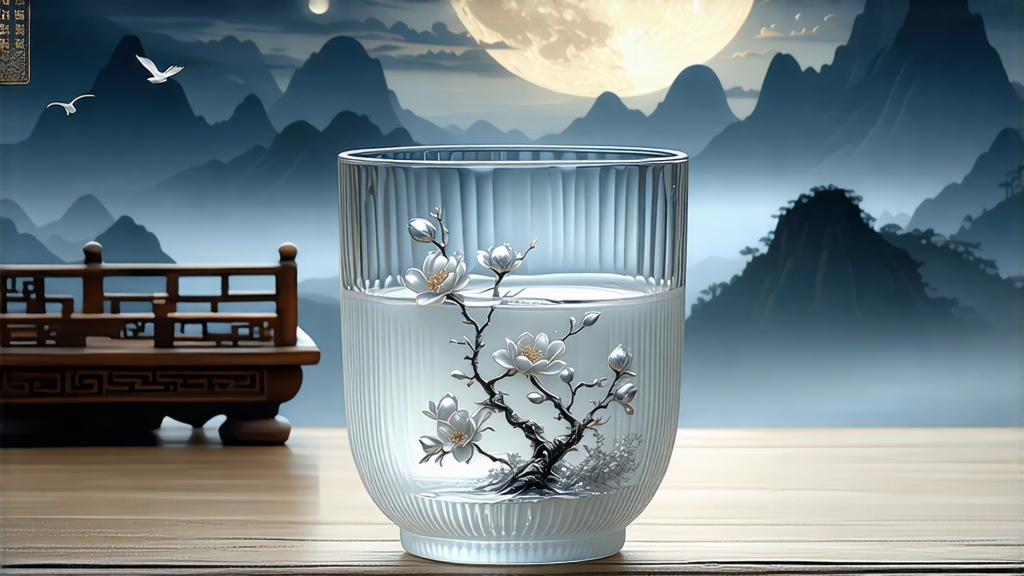
Among the six great families of Chinese tea, white tea is the least theatrical yet the most elusive; it is oxidised by time rather than by fire, and its highest expression is Bai Hao Yin Zhen—literally “White Hair Silver Needle.” To the uninitiated these two words may sound like a line of Tang poetry, but to growers along the northern rim of Fujian’s Min River they mean dawn chill, silver-grey dew, and the hush that falls when the season’s first plump buds are snapped off with a thumbnail still wet from mountain fog.
History: from imperial tribute to minimalist icon
The first verifiable record appears in the Song-era “Cha Lu” (Tea Register) of 1064 CE, where the court of Emperor Renzong lists “white downy tips” among its tribute teas. Caravans carried the compressed cakes northward, yet the loose, needle-shaped style we recognise today did not stabilise until the late Qing, when market demand shifted from powdered whisked tea to whole-leaf infusions. Foreign merchants stationed in Fuzhou port discovered that the pale liquor travelled better than green tea and fetched higher prices in London and St Petersburg. By 1891 Silver Needle was regularly sailing around the Cape of Good Hope, wrapped in lead-lined chests to protect its volatile aroma. Paradoxically, the same maritime trade that spread its fame nearly erased its origin story; for most of the twentieth century Western catalogues filed it under “Pekoe” alongside Indian and Ceylon grades. Only after China reopened in the 1980s did inspectors re-map the micro-appellations inside Fujian, granting Bai Hao Yin Zhen a protected status equivalent to Champagne in France.
Terroir: why Fuding and Zhenghe taste like morning mist
The tea is legally required to be picked within two counties—Fuding in the east and Zhenghe in the north—where red-yellow granitic soils, 1 200 mm of evenly distributed rainfall, and a pronounced 12 °C diurnal range create slow, stress-induced accumulation of amino acids. Elevations of 400–800 m sit just below the cloud base, so buds are bathed in diffused light that favours the synthesis of L-theanine and limits bitter catechins. Locals insist that the bamboo-leaf aroma of Fuding Silver Needle and the slightly sweeter, orchid note of Zhenghe Silver Needle cannot be replicated even ten kilometres outside the demarcated zone; laboratory GC-MS profiling confirms higher levels of hotrienol and cis-3-hexenyl hexanoate in Fuding lots, whereas Zhenghe shows a spike in linalool oxides.
Harvest calendar: the art of the single bud
Authentic Silver Needle is made exclusively from the unopened bud—the “single flag without the leaf.” Picking begins when the local white tea cultivar Da Bai Hao reaches a length of 2.5–3 cm and still lies flat against the stem like a tiny ivory sword. Experienced pickers harvest only on clear mornings between 9 a.m. and 2 p.m., after overnight dew has evaporated but before the sun turns the bud rubbery. A top worker can collect 600 g of fresh buds in a day; 25 000 buds are needed for 500 g of finished tea, which explains why Silver Needle routinely commands higher prices than spring Longjing.
Craft: doing almost nothing with absolute precision
White tea’s minimalism is deceptive. Once back at the farmhouse, buds are spread on bamboo trays 2 cm thick and left to wither for 36–48 h in a shaded, cross-ventilated loft. The goal is to reduce moisture from 75 % to 8 % without ever allowing the temperature to exceed 30 °C; above that threshold enzymes responsible for grassy aldehydes stay active, marring the signature “clear sweetness.” Every two hours the tea master gently turns the buds by hand, feeling for the subtle transition from turgid to leathery. Final drying employs either charcoal embers under a wire mesh or low-temperature electric ovens set at 40 °C; both methods must arrest oxidation while preserving the silvery trichomes that give the tea its name. The entire process contains only two steps—withering and drying—yet a five-minute lapse in attention can flatten aromatics for which consumers pay a premium.
Grades and market names
Although national standard GB